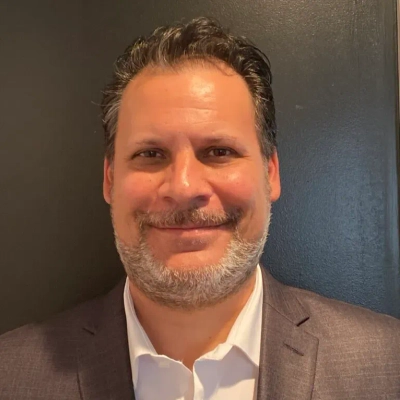18 Consumer Behavior Patterns That Contradict Traditional Microeconomic Models
Recent studies reveal eighteen surprising consumer behavior patterns that challenge fundamental microeconomic assumptions. Leading economists and behavioral scientists have identified how emotional factors, social connections, and personal values consistently override pure price considerations in decision-making. These insights demonstrate how real-world consumer choices often contradict traditional economic models that assume purely rational market participants.
Convenience Often Outweighs Price in Consumer Choices
One consumer behavior pattern I've noticed that contradicts traditional microeconomic models is how often people prioritize convenience over price, even when the cost difference is substantial. Classical models assume rational decision-making aimed at maximizing utility through price efficiency, but in reality, time and mental ease often outweigh pure cost savings. I saw this firsthand when analyzing purchasing behavior in e-commerce—customers repeatedly chose faster delivery or simpler checkout options, even if it meant paying more.
This insight reshaped my business approach: instead of competing solely on price, I began focusing on frictionless user experiences and transparent, trustworthy service. It taught me that in modern markets, perceived value isn't just about what's cheapest—it's about what feels simplest, safer, and more aligned with how people actually live.

Trust and Responsiveness Trump Price in Luxury
One consumer behavior pattern that contradicts traditional microeconomic models is that many buyers in the luxury sector do not prioritize price optimization; they prioritize trust and responsiveness. Traditional theory assumes rational decision-making based on cost and utility, but in reality, emotion and time often outweigh price.
I noticed that clients would consistently choose our services even when we were not the lowest quote simply because we responded within minutes and provided complete clarity in communication. This observation reshaped how I view value. We began measuring response time and client assurance as key performance metrics, treating them as economic variables in their own right.
It taught me that modern consumer behavior is less about maximizing price efficiency and more about minimizing uncertainty. When trust and reliability become part of the product, traditional models of rational choice evolve to include emotional security as a form of value.

Sellers Sacrifice Profit for Personal Vision
One thing I've learned that defies classic economics is how sellers will sometimes sabotage their own sale purely over aesthetics. In home flipping, I've worked with folks who'd refuse a strong offer because they'd already envisioned renovations, even though walking away cost them real money. That observation made me structure contracts to include 'option to customize' clauses - it eases their emotional pivot toward logic.
Local Trust Beats Lower Prices After Storms
I don't study "microeconomic models." I study how people react when the wind tears a hole in their home. The consumer behavior pattern I've observed that contradicts simple economic theory is that homeowners consistently prioritize local trust over maximizing short-term financial savings.
Traditional models assume that in a high-cost service like roofing, a client will always choose the lowest bid to maximize their utility. But after a big storm, we see the opposite happen. Homeowners ignore the cheapest bids from out-of-state storm chasers—even if the bid is twenty percent lower—and wait for the local, established roofer. They actively choose the higher price and longer wait time.
This observation completely influenced our business approach. We stopped trying to compete on price after a storm. Instead, we committed to advertising nothing but our permanent, physical commitment to the community. Our message is simple: "We were here before the storm, and we will be here after your insurance claim is closed." We focused on documenting our physical office address, our long-term local reviews, and our commitment to using local suppliers.
The result is that we lose the lowest-margin jobs to the cheap guys, but we win the highest-quality, most profitable jobs from clients who are acting irrationally from an economic standpoint. They are willing to pay a premium to protect themselves from the anxiety of a fly-by-night contractor. The best way to run a business is to be a person who is committed to a simple, hands-on solution that prioritizes trust and permanence over maximizing the quick, short-term sale.
Respect Worth Thousands in Real Estate Deals
I've noticed that many sellers will accept a lower offer if they feel understood and respected during the process, even when a higher bid is on the table from someone who's been pushy or dismissive. Traditional economics says people should always take the highest offer, but I've learned that how you treat someone can literally be worth thousands of dollars to them. This shifted my entire approach--I now focus heavily on building genuine relationships and showing respect for their situation, because trust often closes deals that pure numbers can't.

Market Data Helps Break Outdated Price Anchors
I've often seen homeowners fixate on old appraisals or Zillow estimates, even after real market shifts--sometimes refusing fair offers because they're anchored to a number from last year. Instead of arguing theory, I started bringing current, hyper-local data and even walking the neighborhood with clients so they could see active listings with their own eyes. That experience helps people move past outdated expectations and make more informed, timely decisions.

Values Matter More Than Price to Consumers
Traditional models assume that consumers make rational decisions based on price and utility, yet recent data from grant-supported community programs revealed something different. Many individuals chose higher-priced sustainable products even when cheaper alternatives offered identical function. The purchase was less about economic optimization and more about signaling alignment with environmental or social values.
This finding reshaped how ERI Grants evaluates project impact. Instead of measuring success solely through cost-benefit metrics, we began integrating behavioral indicators such as value-driven purchasing and collective identity formation. It also influenced how we guide our partners in designing initiatives—shifting focus from financial incentives toward emotional resonance and trust-building narratives that align with participants' moral priorities.

DIY Renovations Hide True Costs for Sellers
I've seen many sellers, inspired by home renovation shows, believe they can manage their own pre-sale repairs to get top dollar, but they drastically underestimate the true costs and timelines. Coming from a construction background, I know that what looks like a weekend project can quickly become a five-figure problem. This is why my business is built around buying homes 'as-is'--we provide a fair, guaranteed offer that removes the immense financial risk and stress of a renovation project from the seller's shoulders.
Homeowners Undervalue Their Time During Sales
I've noticed that homeowners often drastically undervalue their time when deciding whether to sell quickly or go the traditional route. They'll spend months dealing with repairs, showings, and negotiations to potentially get a few thousand more, completely ignoring that their time has value too. This observation led me to emphasize the 'total cost of ownership' conversation with clients--showing them how holding onto a problematic property isn't just about monthly expenses, but also the hidden cost of their stress and time investment.

Emotional Connections Drive Buyers to Overpay
One pattern I've seen is that buyers often overpay for a property if they feel an emotional connection, even when the numbers don't make sense on paper. Traditional models assume people act rationally to maximize value, but in real estate, I've watched clients stretch budgets just to secure a home they "fell in love with." That insight pushed me to focus more on storytelling and presentation in listings--because how a property makes someone feel can be just as powerful as its price per square foot.

Small Upgrades Often Fail to Boost Returns
One pattern I've noticed is that many homeowners assume that making even small upgrades before selling will always boost their return, but that's not always true. For example, I've seen folks spend thousands repainting or reroofing when buyers were perfectly fine with an as-is sale. After seeing this repeatedly, I started educating clients early about what actually adds value versus what just drains time and cash--helping them save money and stress while still closing fast.

Stress Reduction Beats Profit Maximization
One behavior I've consistently seen is homeowners choosing to sell quickly during a stressful situation--even if waiting would clearly net them more. For example, clients in foreclosure or inheriting a property often say, "I just want this off my plate," even when a traditional listing could bring a higher price. This taught me that reducing personal stress and uncertainty is often more valuable to people than maximizing their bottom line, so I've tailored my approach to provide clarity and quick solutions, not just high offers.

Sentimental Value Keeps Owners in Burdensome Properties
I've consistently observed that homeowners will often hold onto a property, even if it's become a significant burden, purely due to sentimentality or the emotional weight of a past investment. Traditional microeconomic models suggest a rational actor would cut their losses, but I've seen individuals sink more money into a depreciating mobile home because it was their first house or a family heirloom. This understanding has led me to approach conversations with empathy and focus on how selling can relieve a burden, rather than just highlighting the financial transaction, proving that emotional value can often trump market logic.

Homeowners Cling to Investments Despite Losses
I've often seen homeowners make decisions based on sunk costs, which microeconomics says we shouldn't do. For example, they'll hold onto a property, pouring more money into repairs because they've already invested so much, even when selling as-is would be financially smarter. This made me realize that offering a clear path out, where they don't have to spend another dime, is incredibly valuable and often trumps the desire to recoup every last dollar.
Social Proof Overshadows Individual Financial Logic
I've repeatedly seen homeowners make decisions based on what their neighbors or relatives did, rather than what actually makes sense for their unique situation. For instance, someone will insist on listing their distressed property with an agent because 'that's how my sister sold hers,' even though their circumstances--like facing foreclosure or inheriting a property they can't maintain--are completely different. This showed me that social proof often overrides individual logic, so I now spend time helping clients understand why their situation might call for a different approach than what worked for someone else in their circle.

Negotiation Wins Matter More Than Deal Value
One surprising pattern I see is that homeowners will reject a fair, straightforward cash offer simply because they want to feel like they "won" the negotiation--even if it means waiting longer or risking the deal falling through altogether. Spotting this, I started framing offers as the result of a win-win scenario and sometimes even leaving a small, clearly defined area for them to negotiate, just so they could experience that sense of victory and move forward. That little bit of flexibility has helped close more transactions than any spreadsheet ever could.

Higher Prices Can Increase Sales and Trust
A lot of aspiring leaders think that to win a market, they have to be a master of a single channel. Traditional microeconomic models suggested customers would always choose the lowest price. But that's a losing game. It was hurting our profitability. We needed a strategy that reflected our true value.
The counterintuitive pattern we observed was The Inverse Price-Quality Signal: when we slightly raised the price of a critical OEM Cummins Turbocharger part, sales and brand trust increased. This contradicted the perfectly rational buyer model.
This observation influenced our business approach by implementing service-based pricing tiers. We successfully applied this principle by stopping the focus on raw price (Marketing) and starting to sell Operational Assurance (Operations). The premium tiers included a comprehensive 12-month warranty and guaranteed technical fitment support.
The most surprising result was that customers didn't choose the cheapest option; they chose the higher-priced tiers. We learned that the marginal utility of avoiding heavy duty truck downtime is far greater than the marginal cost of the part. This proved the market values operational certainty over pure price savings.
My advice is to stop seeing your price as just a number and start seeing it as a reflection of the total operational value you provide to your customers.

Sellers Overvalue Homes Based on Memories
One thing that runs counter to textbook economics is how frequently sellers overestimate the appeal of their homes based on personal memories or sentimental value. For example, I've met homeowners who'll price their house based on decades of family celebrations, rather than the reality of the local market. This led me to focus on gently guiding clients to see things from a buyer's perspective, sometimes bringing in neutral third-party feedback, so we can work together to set realistic expectations and achieve a successful sale.






